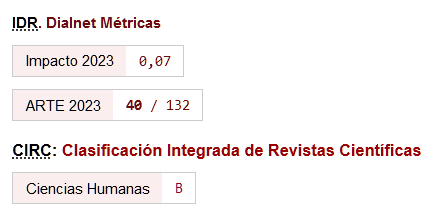Illustrious men in Seville and Saluzzo: humanist and renaissance models in the Casa di Pilatos and the Casa Cavassa
Keywords:
Cavassa House, Francesco Cavassa, Classics, don Fadrique Enriquez de Ribera, marquis of Tarifa, Certosa of Pavia, Genoa, Humanism, Pilatos, Renaissance, Saluzzo, Sevilla, Margherita di Foix, Matteo Sanmicheli, Vivaldo, Hans Clemer, Antonio Maria Aprile da Carona, Benedetto Briosco, Uomini illustri, Andrés Martín, Alonso Hernández, Diego RodríguezAbstract
In the first mid of 16th century the Casa de Pilatos in Seville and the Casa Cavassa in Saluzzo, in north Italy, reveal a similar artistic and cultural patronage. In both cases, the commitments of the two buildings, don Fadrique Enriquez de Ribera, Marquis of Tarifa, and Francesco Cavassa, main functionary of the Marquisate of Saluzzo, promote a whole decoration of their palaces clearly inspired by models drawns from Humanistic culture and Italian Renaissance art, more precisely the sculpure decoration of the Certosa of Pavia in Lombardy. In particular, in both the palaces one of the most important painted decoration is devoted to the humanistic theme of the Uomini illustri (Wase or Famous Men), following a very similar iconography. The renaissance style showed by the two palaces is dramatically in contrast, on one hand, with that of Seville still dominated by the Arabic culture and, on the other hand, that of Saluzzo at that time caracterized by the Gothic art.
As Vicente Lleò Cañal has demonstrated, the Marquis of Tarifa committed the plastic and painted decoration of his palace after coming back of a journey in the Holy Land, made between 1518 and 1520, during which he visited many cities and was fascinated above all by the Certosa of Pavia and Genoa. Therefore he committed to Genoan sculptores the graves for his parents whereas the painted decoration of the Galleria of his palace was realized by Spanish painters but the subjct, the Uomini illustri – Cicerone, Creso, Tito Livio, Orazio, Cornelio Nepote e Quinto Curzio are still visible – is based on a topos of the Italian Humanistic culture. The composition of these figures reminds closely that of the Uomini illustri in Casa Cavassa, with each figure seating in a nich accompanied by an inscription drawn by his own work, which is a very unique solution (in Italy, where this subject was common, usually the inscription was by an author different from the personage represented). Also the plastic decoration committed by Francesco Cavassa was made by an artist, Matteo Sanmicheli, who reveal a style derived from the Certosa of Pavia. Both the palaces, therefore, demonstrate the intention of the patrons to provide the city with an example of cultural and artistic renewer inspired to Classics, throw models uptodate with the Italian Renaissance art.
Downloads
Published
How to Cite
Issue
Section
License
Copyright (c) 2011 Natalia Gozzano

This work is licensed under a Creative Commons Attribution-NonCommercial-ShareAlike 4.0 International License.
Los autores/as que publican en Atrio. Revista de historia del arte están de acuerdo con los siguientes términos:
- Los autores/as conservan los derechos de autor y garantizan a la revista el derecho de ser la primera publicación del trabajo al igual que licenciado bajo una licencia de Creative Commons Attribution-NonCommercial-ShareAlike 4.0 International License que permite a otros compartir el trabajo con un reconocimiento de la autoría de este y la publicación inicial en esta revista.
- El autor/a o cedente del material que se entrega para su publicación autoriza a la revista para que publique, sin obligación alguna (económica o de otra naturaleza), el contenido del referido manual tanto en formato papel, como en digital, así como en cualquier otro medio. Esta cesión de uso del material entregado comprende todos los derechos necesarios para la publicación del material en la revista. Quedan garantizados, simultáneamente, los derechos morales del autor
- El autor/a o cedente es plenamente consciente y está de acuerdo con que todos o cualesquiera de los contenidos proporcionados, formarán una obra cuyo uso se cede a la revista para su publicación total o parcial.
- El autor/a o cedente garantiza ser el titular de los derechos de Propiedad Intelectual sobre los contenidos proporcionados, es decir, sobre el propio texto e imágenes/fotografías/obras fotográficas que se incorporan en su artículo.
- El autor/a o cedente asegura y garantiza: (i) que todo el material enviado a la revista cumple con las disposiciones legales aplicables; (ii) que la utilización de cualquier material protegido por derechos de autor y derechos personales en la concepción del material se encuentra regularizada; (iii) que obtuvo las licencias de derechos, permisos y autorizaciones necesarias para la ejecución del material, inclusive los derechos de imagen, si fueran aplicables; y (iv) que el material no viola derechos de terceros, incluyendo, sin limitarse a estos, los derechos de autor y derechos de las personas.
- El autor/a o cedente, exime a la revista de toda y cualquier responsabilidad con relación a la violación de derechos de autor, comprometiéndose a emplear todos sus esfuerzos para auxiliar a la revista en la defensa de cualquier acusación, medidas extrajudiciales y/o judiciales. Asimismo, asume el abono a la revista de cualquier cantidad o indemnización que esta tenga que abonar a terceros por el incumplimiento de estas obligaciones, ya sea por decisión judicial, arbitral y/o administrativa.













